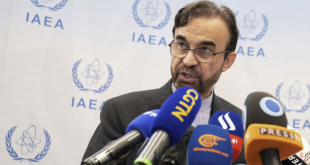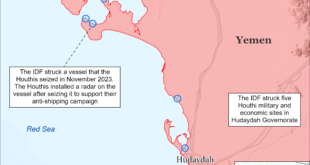 TEHRAN (Fars News Agency)- Transnational rail project connecting Iran with Turkmenistan and Kazakhstan could have major strategic and trade implications for the region.
TEHRAN (Fars News Agency)- Transnational rail project connecting Iran with Turkmenistan and Kazakhstan could have major strategic and trade implications for the region.
Leaders of the two most energy-rich Central Asian republics have hailed the start of construction of a new railway line linking them with Iran.
The 900-kilometer transnational railway will run from Kazakhstan through Turkmenistan to Iran, and more broadly will create connections from Russia to the Persian Gulf.
The railway will increase the export potential of the two mineral-rich Central Asian republics, experts say, as well as making Turkmenistan a regional transport hub.
Construction of the line started in Turkmenistan on December 1 at the border town of Barakat, near Iran’s Golestan province, at a launch ceremony attended by Turkmen president Gurbanguly Berdymuhammedov and Kazak and Iranian officials.
Berdymuhammedov signed an agreement with his Kazak counterpart Nursultan Nazarbaev in May to build their stretch of the railway, and this was finalized at the October summit of Caspian Sea states in Tehran.
The work, costed at 620 million US dollars, will be funded by the governments of the three countries.
The line is expected to come into operation in 2011, and will initially carry up to five million tons of freight a year, later rising to 12 million.
At the lavish ceremonies marking the start of construction, President Berdymuhammedov symbolically bolted together two sections of rail using a gold-plated tool, and declared that the railway would become a key transit route for dozens of countries.
“All of Europe, Russia and the Central Asian countries will gain access to southern waters via a shorter route, while the Persian Gulf states will gain similar opportunities in a northerly direction,” news agencies quoted him as saying.
Transport experts agree the project could bring about radical changes to the flow of north-south traffic between the Persian Gulf and the former Soviet states.
One Moscow-based transport expert, who did not want to be named, said the idea of joining the transport systems of Iran and the Soviet Union had been around since the Second World War.
The project offers significant benefits to Turkmenistan and Kazakhstan, the most important Central Asian countries in terms of energy resources. Both want to expand their export routes, including for oil and gas.
Kazakhstan, which is experiencing rapid economic growth derived from its enormous oil reserves, plans to increase oil exports from the 58 million tons a year to 120 or even 150 million tons by 2015.
Turkmenistan is another beneficiary of rising world demands for energy. It produces more than 65 billion cubic meters of gas every year, 40 billion cubic meters of which currently goes through pipelines controlled by Russian gas giant Gazprom.
Last year, Turkmenistan signed an agreement with Iran to increase gas deliveries from eight to 14 billion cubic meters a year. It also has significant and partly unexplored reserves of oil and gas under the Caspian Sea.
While the Kazakh and Turkmen leaderships consider alternative pipeline routes, including eastwards to China, transporting fuel on railway tankers through Iran could offer them useful breathing-space. According to the Moscow-based analyst, they could develop greater capacity to liquefy gas for easier transportation by the time the railway is complete.
Moscow, too, will benefit from better transport links in the region, its traditional sphere of influence.
“Russia is thereby strengthening its position in Central Asia, and also in terms of competition with China over transport,” said the analyst.
One problem with harmonizing continental rail links, however, is the practical question of different rail gauges. Kazakh and Turkmen railways are built to the wider gauge used in Russia. Iran’s railways, on the other hand, are the British “standard gauge” as used on 60 per cent of the world’s rail networks.
If these countries are to avoid the time-consuming procedure of lifting up the rolling stock and shifting it onto different wheel axles every time it crosses the border – currently the case on the Kazakh-Chinese frontier, the new rail route may have to be adapted to the international standard.
 Eurasia Press & News
Eurasia Press & News


